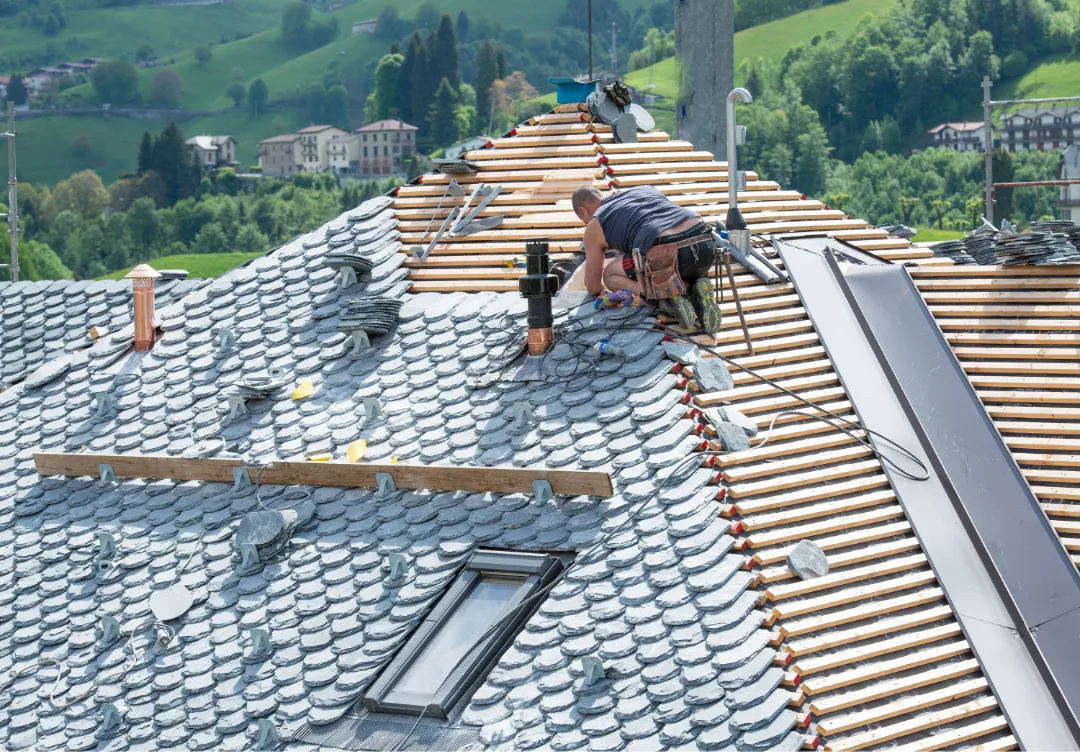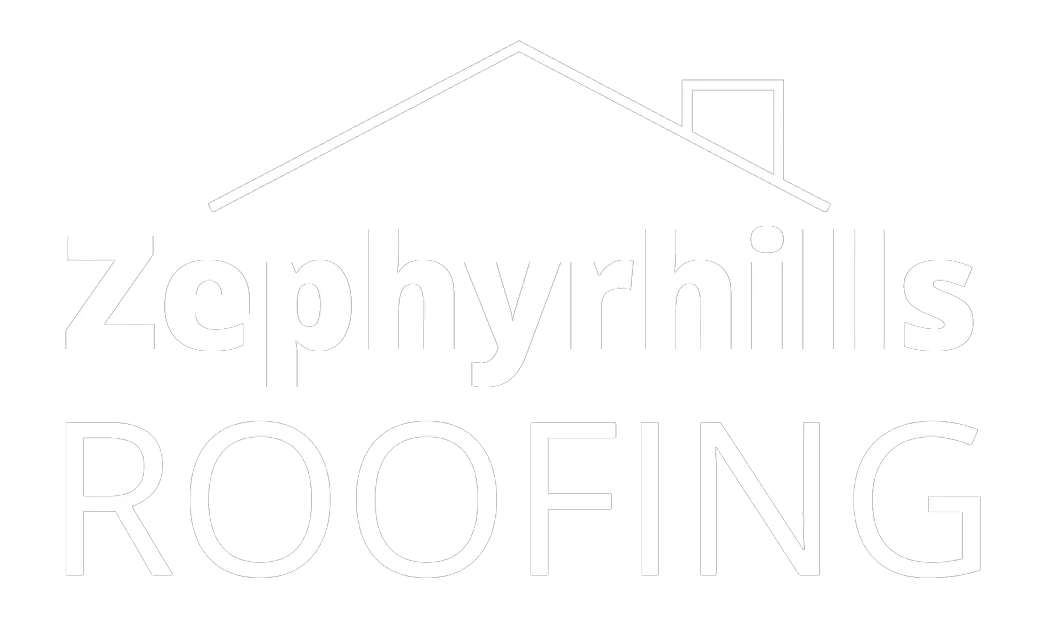ZEPHYRHILLS ROOFING BLOG
Take A Deep Dive Into Our Roofing Topics

DIY Roof Maintenance: Simple Tips to Extend Your Roof's Lifespan
Maintaining a roof is like tending to a well-oiled machine; it requires regular care and attention to keep it functioning smoothly. And while hiring professionals for roof maintenance is always an option, there are simple tips that we can follow to extend our roof's lifespan and save some money in the process. In this discussion, we will explore some do-it-yourself techniques that can help us ensure the longevity of our roofs. So, let's uncover these valuable tips and discover how we can protect our roofs from the elements and keep them in top-notch condition.
Regular Inspection
Regularly inspecting your roof is crucial for maintaining its longevity and preventing potential issues. Roof inspection frequency depends on various factors such as the type of roof, weather conditions, and age. As a general guideline, it is recommended to inspect your roof at least twice a year – once in the spring and once in the fall. However, if you live in an area with severe weather or have recently experienced a storm, it is advisable to perform an additional inspection. During your roof inspection, keep an eye out for signs of roof damage. Look for missing or damaged shingles, cracked flashing, or any signs of water damage such as water stains or mold growth. Check for any loose or clogged gutters, as they can cause water to pool on your roof. Inspect the roof from both the inside and outside if possible, paying attention to any signs of sagging or structural issues.
Cleaning Gutters and Downspouts
During our roof inspection, it is important to also address the task of cleaning gutters and downspouts. Proper gutter maintenance is crucial for the overall health and longevity of your roof. Over time, leaves, twigs, and other debris can accumulate in the gutters, causing them to become clogged. This can lead to water overflowing onto your roof and potentially causing damage. By regularly cleaning your gutters, you can prevent this from happening.
In addition to cleaning the gutters, it is equally important to clean the downspouts. Downspouts are responsible for directing the water from the gutters away from your home's foundation. If the downspouts are clogged, water can pool around the foundation, leading to structural issues and potential water damage. Cleaning the downspouts ensures that water flows freely away from your home.
To clean the gutters and downspouts, start by using a ladder to access them. Remove any debris by hand or with a small trowel. Once the gutters are clear, use a garden hose to flush out any remaining dirt or debris. For the downspouts, use a plumber's snake or a high-pressure water hose attachment to clear any clogs.
Removing Debris and Leaves
To maintain a clean and functional roof, it is essential to regularly remove debris and leaves. Not only can debris and leaves accumulate on the roof, but they can also clog the gutters and downspouts, leading to potential water damage. When leaves and debris block the flow of water, it can cause water to overflow and seep into the roof, leading to leaks and structural damage.
One effective way to prevent water damage caused by debris and leaves is by using gutter guards. Gutter guards are devices that are installed over the gutters to prevent leaves and debris from entering the system while allowing water to flow freely. By installing gutter guards, you can minimize the amount of debris that accumulates in your gutters, reducing the risk of clogging and water damage.
Regularly removing debris and leaves from your roof not only helps to prevent water damage but also extends the lifespan of your roof. Accumulated debris can create a breeding ground for mold and algae, which can deteriorate the roof's materials over time. By taking the time to remove debris and leaves, you can ensure that your roof remains in good condition and functions properly for years to come.
Repairing or Replacing Damaged Shingles
When it comes to maintaining a clean and functional roof, one important aspect to address is the repair or replacement of damaged shingles. Over time, shingles can become cracked, split, or even completely detached from the roof. This can lead to leaks, water damage, and even structural issues if not addressed promptly.
To repair damaged shingles, there are a few techniques you can use. If the shingle is only slightly damaged, you can try using roofing cement to seal any cracks or splits. Simply apply the cement to the damaged area and press the shingle back into place. For more severe damage, you may need to remove the damaged shingle and replace it with a new one. This involves carefully prying up the damaged shingle, removing any nails or adhesive, and then sliding a new shingle into place, making sure it aligns with the surrounding shingles.
When choosing materials for repairing or replacing damaged shingles, it's important to consider the type of shingle you currently have on your roof. Different materials, such as asphalt, wood, or metal, require specific techniques and materials for repair. It's also important to choose materials that are compatible with your existing shingles to ensure a proper fit and prevent future issues.
Preventing Moss and Algae Growth
We regularly maintain our roof to prevent the growth of moss and algae. Moss and algae can cause serious damage to our roof, leading to leaks and structural issues. To prevent mold growth and keep our roof in good condition, we use environmentally friendly solutions for moss and algae control.
One effective method we use is to regularly clean our roof. We remove any debris, such as leaves and twigs, that can accumulate and create a favorable environment for moss and algae to grow. We also make sure to keep our gutters clean and free from any blockages that can cause water to pool on the roof.
In addition to regular cleaning, we apply environmentally friendly solutions to prevent moss and algae growth. One option is to use a mixture of water and vinegar, which is a natural and non-toxic solution. We spray this mixture on the affected areas of the roof and let it sit for some time before rinsing it off with water. This helps to kill and prevent the growth of moss and algae.
Another option is to use zinc or copper strips. These metal strips are installed near the peak of the roof and work by releasing small amounts of metal ions when it rains. These ions inhibit the growth of moss and algae, keeping our roof clean and moss-free.
Conclusion
In conclusion, regular maintenance is key to extending the lifespan of your roof. By conducting regular inspections, cleaning gutters and downspouts, removing debris and leaves, and repairing or replacing damaged shingles, you can prevent costly damages and ensure your roof remains in optimal condition. Additionally, taking measures to prevent moss and algae growth will further protect your roof from potential damage. Remember, a little effort goes a long way in maintaining a durable and long-lasting roof.
Connect With Us
© Copyright 2025 Zephyrhills Roofing. All Rights Reserved.
Terms & Conditions | Privacy Policy

